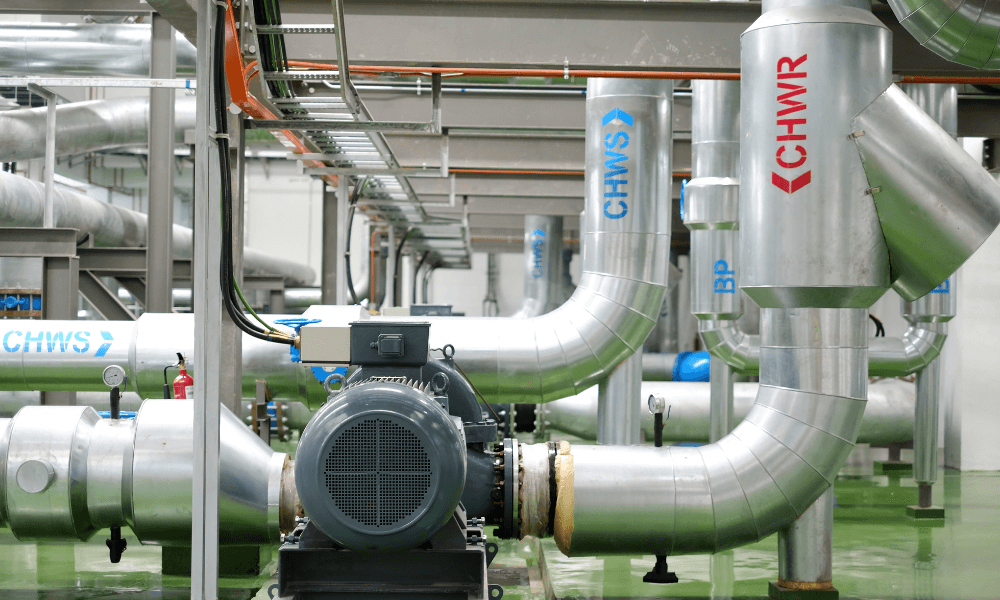
Planning and Implementing District Cooling Systems: Key Considerations and Challenges
In the ever-evolving landscape of urban development and sustainability, the demand for energy-efficient solutions is more pressing than ever. One such innovative approach gaining traction is the implementation of district cooling systems. These systems offer a promising solution for urban areas seeking to optimize energy usage, reduce carbon footprints, and enhance the quality of life for their residents. However, the planning and execution of district cooling systems come with a set of distinct considerations and challenges that require careful navigation.
Understanding District Cooling Systems
District cooling is a centralized system that provides cooling services to multiple buildings or facilities within a defined area, typically an urban district. Unlike traditional air conditioning systems, which often operate individually within each building, district cooling harnesses economies of scale by generating chilled water at a central plant and distributing it to connected buildings via a network of insulated pipes. This approach not only minimizes redundant cooling processes but also contributes to lower energy consumption and reduced greenhouse gas emissions.
Key Considerations for Planning District Cooling Systems:
1. Energy Efficiency: At the heart of district cooling systems lies the pursuit of energy efficiency. Professionally designed systems can significantly reduce electricity consumption for cooling purposes, which is a notable concern in energy-intensive urban environments.
2. Demand Estimation: Accurate estimation of cooling demand is essential to determine the appropriate capacity of the central plant. Factors such as climate, building types, occupancy patterns, and cooling loads must be thoroughly analyzed.
3. Network Design: The layout of the cooling network plays a pivotal role in optimizing energy distribution. Engineers must carefully design the pipe network to minimize heat losses and ensure efficient water circulation.
4. Integration with Renewable Energy: Incorporating renewable energy sources into the district cooling system can enhance its sustainability profile. Solar energy, waste heat recovery, and geothermal sources can all contribute to the energy mix.
5. Environmental Impact: While district cooling reduces direct emissions, its environmental impact should be holistically assessed. The energy sources powering the central plant and the materials used for the infrastructure should align with sustainability goals.
6. Cost-Benefit Analysis: A comprehensive cost-benefit analysis should weigh the initial investment against long-term operational savings and environmental benefits.
Challenges in Implementing District Cooling Systems:
1. Infrastructure: Establishing the required infrastructure, including the central plant, distribution network, and building connections, can be complex and costly.
2. Regulatory Hurdles: Navigating through local regulations and policies that pertain to energy distribution, environmental standards, and land use can pose challenges.
3. Initial Costs: While district cooling offers long-term savings, the initial investment can deter some stakeholders, requiring a clear communication of the system's financial advantages.
4. Consumer Acceptance: Educating building owners, developers, and residents about the benefits of district cooling and overcoming resistance to change can be an ongoing challenge.
5. Technical Expertise: Designing, operating, and maintaining district cooling systems require specialized technical expertise that might be scarce in some regions.
6. Integration with Existing Infrastructure: Retrofitting existing buildings to connect to a district cooling network can be logistically and technically challenging.
Conclusion
As urbanization continues to reshape the global landscape, district cooling systems emerge as a strategic solution to address energy efficiency and environmental concerns. While the planning and implementation of such systems come with their share of challenges, the potential benefits in terms of reduced energy consumption, lowered emissions, and enhanced urban sustainability are undeniable. With careful consideration of key factors and proactive mitigation of challenges, district cooling systems can pave the way for cooler, greener, and more sustainable cities.